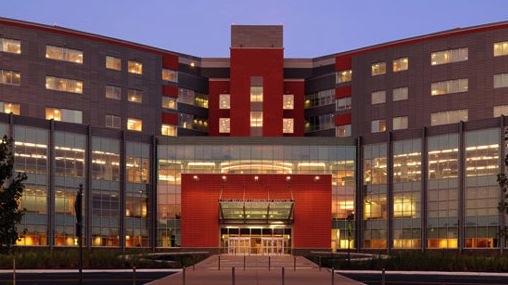The Department of Defense has released the findings of an independent report on energy efficiency and sustainability standards used by the Pentagon for military construction. The report strongly affirmed the value of LEED-certified high performing buildings to America’s military and U.S. taxpayers.
The study, conducted by the National Research Council, considered only energy efficiency. It recommended that the DoD continue to require new buildings or major renovations to be designed to achieve at least LEED Silver or the equivalent.
Roger Platt, Senior Vice President of Global Policy and Law at the U.S. Green Building Council, says, “LEED has played a significant role in reducing energy and water bills in public sector buildings across the country, saving taxpayers money and contributing to the nation’s security. This important new independent study from the National Research Council concludes that the LEED green building certification program should continue to be used in Defense Department buildings to advance energy efficiency in construction and reduce operational costs. Using LEED at Pentagon installations is a win-win proposition for the country and for the military personnel these buildings serve."
(http://www8.nationalacademies.org/onpinews/newsitem.aspx?RecordID=18282&utm_source=Press+Releases&utm_campaign=5fd1d3641e-Direct_PR_Military_Facilities2_15_2013&utm_medium=email)
Related Stories
| Aug 14, 2014
How workplace design can empower employees, businesses
Focusing on recent work at Follett and Zurich, CannonDesign’ Meg Osman reveals the power of research, strategy, change management, and measurement to transform businesses for the better.
| Aug 13, 2014
UIA commits to phasing out CO2 emissions in built environment
The International Union of Architects, representing approximately 2.3 million architects worldwide, has unanimously adopted the 2050 Imperative committing to environmental and social sustainability.
| Aug 13, 2014
ADD Inc. to merge with Stantec
The deal, which helps Stantec strengthen its capabilities in the buildings business on the East Coast, is expected to close in September.
| Aug 13, 2014
Campus UX: Why universities should be creating 'branded environments' on campus
When most colleges and universities consider their brands, they rarely venture beyond the design and implementation of a logo, writes Gensler Design Director Brian Brindisi.
| Aug 12, 2014
Vietnam's 'dragonfly in the sky' will be covered in trees, vegetation
Designed by Vietnamese design firm Vo Trong Nghia Architects, the building will be made up of stacked concrete blocks placed slightly askew to create a soft, organic form that the architects say is reminiscent of a dragonfly in the sky.
| Aug 12, 2014
First look: Calatrava's futuristic Main Building opens at Florida Polytechnic University
The $60 million structure is wrapped in a bright-white, aluminum pergola for dramatic effect and solar shading.
| Aug 12, 2014
Shading prototype could allow new levels of environmental control for skyscraper occupants
Developed by architects at NBBJ, Sunbreak uses a unique three-hinged shade that morphs from an opaque shutter to an abstract set of vertical blinds to an awning, depending on what is needed.
| Aug 12, 2014
Design firms invited to submit qualifications for St. Petersburg, Fla., waterfront project
The city of St. Petersburg, Fla., invites firms to submit their ideas for a new and improved pier for Florida's fifth largest city.
| Aug 11, 2014
Air Terminal Sector Giants: Morphing TSA procedures shape terminal design [2014 Giants 300 Report]
The recent evolution of airport terminals has been prompted largely by different patterns of passenger behavior in a post-9/11 world, according to BD+C's 2014 Giants 300 Report.
| Aug 11, 2014
The Endless City: Skyscraper concept connects all floors with dual ramps
Rather than superimposing one floor on top of another, London-based SURE Architecture proposes two endless ramps, rising gradually with a low gradient from the ground floor to the sky.















